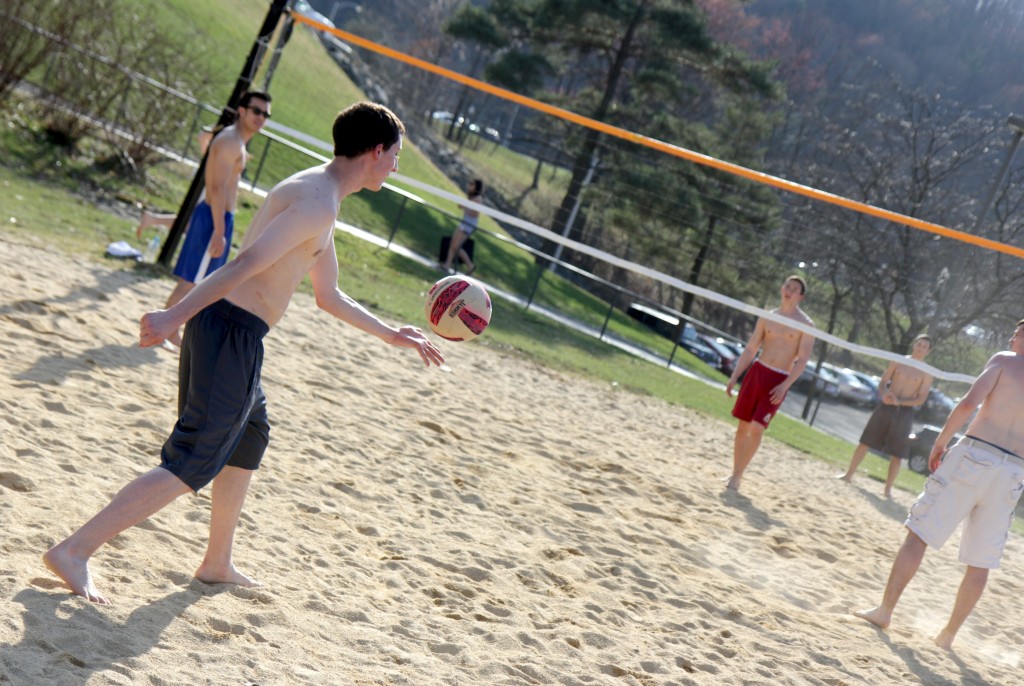
What does spring break mean? “Spring” and “break” are two words that, even separately, have very positive connotations. “Spring” is a season, generally noted for nicer weather and life blooming again after a long, cold winter. “Break” is a rest, and in this case, it’s a rest from school. Together, these words represent a beautiful time of the school year.
According to visual.ly, a website for sharing infographics and data visualizations, college students spend over $1 billion collectively on spring break. Polls showed that 83 percent of females said that there was more drinking during spring break than at their college campuses during the school year, 74 percent said there was more sexual activity, 57 percent said they were promiscuous in order to fit in, 83 percent had friends who drank every night of the week and 60 percent had friends who had unprotected sex. On average, students consumed 10 alcoholic drinks a day during the break.
A time for sunshine, relaxation, heavy drinking (because we don’t do enough of that anyway), family, Passover, Easter and vacation spots. Spring break is an incredible week, no doubt about it. But when did it all begin?
Spring break can be traced all the way back to ancient Greece. The young men and women welcomed the return of spring with days of drinking and dancing to celebrate the gods. This would often lead to intoxication and “giving in to earthly pleasures,” according to www.coolestspringbreak.com.
The more modern spring break can be traced back to 1936, when the swim coach of Colgate University brought some of his swim team to Fort Lauderdale, Fla., to practice in the Casino Pool — the first Olympic-sized swimming pool built in the state.
In 1938, Fort Lauderdale’s Casino Pool hosted the College Coaches Swim Forum. About 300 swimmers competed at the event. Also, the Elbo Room opened in the Seabreeze Hotel, giving the students a place to drink and relax when they weren’t swimming — aka spring break.
In 1959, Fort Lauderdale continued the trend of spring break with local bars that offered all-you-can-drink beer for $1.50. It’s no surprise that 20,000 students showed up that year.
But in 1960, Fort Lauderdale cemented itself as a prime spring break spot with the release of “Where the Boys Are,” a movie about three young women who go to Fort Lauderdale in search of adventure and love. This movie got the attention of students, even though it didn’t show the wild side of spring break.
In 1961, Daytona Beach was on the rise as a spring break destination, taking around 100,000 tourists from the Fort Lauderdale scene.
Fort Lauderdale reached its high point in 1985, with 350,000 students swarming the city. Because of this surplus, the city began setting new occupancy rules and alcohol laws. They were becoming fed up with college students and their partying. The mayor even went on “Good Morning America,” stating that students were no longer welcome — ensuring their departure by banning open containers on the beaches.
In 1986, MTV was not permitted to set up on the beach and more than 2,500 students were arrested that year.
With Fort Lauderdale turning students away, Daytona welcomed them with open arms, becoming the most popular spring break destination.
Today, Panama City, Fla. alone has more than 18,000 hotel rooms prepared solely for spring break and almost 500,000 yearly visitors. Between Texas and Florida, students spend an average of $1,100 each during the week of spring break. Transportation and rent account for only half of that figure.
Deanna Dunne, a junior majoring in integrative neuroscience, looks back on her last spring break.
“We bought all our alcohol at duty free at the Bahamas Airport because it was incredibly cheap,” Dunne said. “A bottle of goose was 30 bucks.”
Whether you travel or stay at home, spring break can be a lot of fun. You aren’t meant to treat spring break partying like any other weekend. You’re supposed to do some crazy stuff. While it’s always important to stay safe, don’t forget to let loose before we come back for finals.
In addition, if any teachers try assigning you projects over the break, tell them that for religious reasons, you won’t be able to do the work. Is this even a lie? What religion doesn’t value the sanctity of spring break? It’s that magical.


